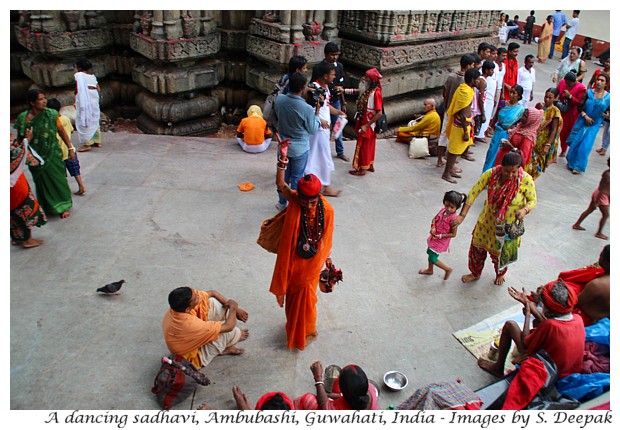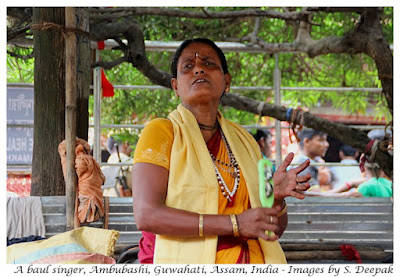Apart from the Sabarimala temple controversy, in this post I also touch on the difficulties of promoting religious reforms in Hinduism and among religious minorities, not just in India but across different countries.
Promoting Religious Reforms
For centuries, social costumes often sanctioned by religious norms had determined the acceptable behaviours in society. The adoption of the Universal Declaration on Human Rights by the United Nations in 1948, gave a new way to measure our social costoms. In many countries, the increasing understanding of human rights violations led to adoption of new laws that undermined the control of the religious authorities on the societies.I feel that reforming the religions through new laws and court judgements is particularly important in two kinds of situations:
(a) When there is a risk to the physical integrity or the life of persons: For example, the old Indian practice of Sati in which widows were forced to be cremated along with their dead husbands, would be seen as one such situation. In fact, the practice was made a criminal offence in 1829 under the British colonial rule.
Today, the female genital mutilation practiced in some parts of the world and among the Bohra community in India, would be another example of a religiously sanctioned practice that must be stopped because it damages of physical integrity of girls and women.
On the other hand, there is considerable debate about the practice of male circumcision, compulsory among Muslim and Jewish communities according to the religious-social norms. Many persons believe that even this is a violation of human rights of children and should be stopped.
(b) When there is a systematic discrimination or violation of human rights: Discrimination against some group of persons based on their gender or other characteristics such as caste, sexual orientation, religious or ethnic affiliation are examples of systematic violation of human rights and need to be challenged though appropriate laws and court judgements.
Some examples of such discriminations come from countries where orthodox religious groups are the majority and control the decision-making. For example, in different Islamic countries, women, homosexuals and persons belonging to other religions face discriminations. In countries like Uganda, dominance of some orthodox evangelical groups has resulted in laws that foresee jails or even death penalty for homosexuals.
Sabarimala Temple
I am personally not very conversant with the Hindu deities in south India, so I am not familiar with the myths of lord Ayappa to whom Sabarimala temple is dedicated. From what I have read, it seems that there are many Ayappa temples and only the temple in Sabarimala prohibits the entry of women in the fertile age group because here Ayappa is seen as a Brahamchari (celibate).Thus, I don’t see the Ayappa cult as a systematic exclusion of women, it is only in Sabarimala and is justified by a specific myth. I am not a follower of Ayappa but if his followers see him as a celibate god, it is not up to me or to anyone else to judge their faith.
Hinduism is full of diverse ways of interpreting and practising the religion, all of which are considered equally valid. They vary from belief in nature worship to a universal formless infinite consciousness (Parmatma) to faith in some or all of millions of gods and goddesses. There is no common sacred book or a supreme authority who can judge and say if one way of Hinduism is better than another. Many fundamentalist Hindu groups see this a weakness, and they want to impose a restricted view of Hinduism, deciding which gods to pray to and how to pray.
I feel that forcing Sabarimala to accept women of child-bearing age and to forego its ideas of a celibate god, is another way to obliterate diversity of Hinduism, a kind of Macdonaldization of religious diversity and pluralism. Though motivated by a different goal, that of promoting gender equality, it violates the basic idea of that temple and forces it in to a narrower definition of Hinduism, just like the ideas of conservative fundamentalists.
Reforming Hinduism in India
After the independence of India in 1947, Government of India has enacted different laws for reforming Hinduism including those related to caste-based discriminations and equality of women. Probably there are still many other aspects of Hinduism that require changes in laws. However, in my opinion, the bigger challenge is how to promote the social transformation in the society, especially in rural areas and smaller towns, so that the laws do not remain aspirational documents but are translated into reality.
The social transformation needed in India, for example for removing caste-based discriminations and promoting equality of women, require decades of patient work in the communities, helping our traditional and religious leaders to change. In comparison, advocacy campaigns and organising protests in the cities for changing the laws is much easier, while making those laws work for everyone is a long and hard struggle. Campaigns and protests also provide more opportunities for image-building and creating star activists, while working in communities to change them is ignored by most and can even be life-threatening.
The social transformation needed in India, for example for removing caste-based discriminations and promoting equality of women, require decades of patient work in the communities, helping our traditional and religious leaders to change. In comparison, advocacy campaigns and organising protests in the cities for changing the laws is much easier, while making those laws work for everyone is a long and hard struggle. Campaigns and protests also provide more opportunities for image-building and creating star activists, while working in communities to change them is ignored by most and can even be life-threatening.
Reforming other religions in India
Reforming the religious and social costumes of minorities is not easy in any part of the world. The biggest challenge is how to not be manipulated by the racists and fundamentalist groups from other religions. Thus, often persons who are active in promoting reforms among the majority groups, prefer to keep silent or look the other way when similar concerns are raised with regards to the minority groups.
For years, Afro-American feminists have lamented the difficulty of talking about the violence faced by Afro-American women because the progressives and activists are afraid that these debates will be hijacked by white supremacists and right-wing fundamentalists to reinforce negative stereotypes about Afro-American men. In the same way, LGBT Muslims in Europe get very little support from the liberals and activists, who do not wish to strengthen the Islamophobia.
It may be because of similar reasons that gender-based inequalities among the minority religions in India do not get much attention from activists and mainstream media. For example, I have read some progressives writing against the Modi government’s attempts to ban the practice of “triple talaq” among Muslims because they see it as minority-bashing by a nationalist government, though it violates women's rights. In the same way, the story of the Catholic nun who had charged the bishop of Patiala with repeated rapes has received limited attention from the mainstream media and activists in India while a report detailing the widespread sexual abuse of nuns has been written by Tim Sullivan, a foreign correspondent for the Associated Press.
Fortunately, blogs and social media are giving new opportunities for persons from different communities to raise their voices and be heard, even if "official" activists and mainstream medias do not wish to talk about their issues for ideological or political reasons.
For years, Afro-American feminists have lamented the difficulty of talking about the violence faced by Afro-American women because the progressives and activists are afraid that these debates will be hijacked by white supremacists and right-wing fundamentalists to reinforce negative stereotypes about Afro-American men. In the same way, LGBT Muslims in Europe get very little support from the liberals and activists, who do not wish to strengthen the Islamophobia.
It may be because of similar reasons that gender-based inequalities among the minority religions in India do not get much attention from activists and mainstream media. For example, I have read some progressives writing against the Modi government’s attempts to ban the practice of “triple talaq” among Muslims because they see it as minority-bashing by a nationalist government, though it violates women's rights. In the same way, the story of the Catholic nun who had charged the bishop of Patiala with repeated rapes has received limited attention from the mainstream media and activists in India while a report detailing the widespread sexual abuse of nuns has been written by Tim Sullivan, a foreign correspondent for the Associated Press.
Fortunately, blogs and social media are giving new opportunities for persons from different communities to raise their voices and be heard, even if "official" activists and mainstream medias do not wish to talk about their issues for ideological or political reasons.
Conclusions
I believe that it is fundamental to change and reform all the religious practices which violate the human rights. Making appropriate laws and court judgements should be seen only as a first step in the reformation process since the social changes require decades if not centuries to change. For example, the Sati practice outlawed by the British in 1829 was still occurring, fortunately not frequently, even after India’s independence. I still remember the story of Roop Kanwar being cremated with her husband in 1987 and that some persons were still defending this practice.However, preventing human rights violations and promoting equality should not be confused with the promotion of monocultures and loss of the rich cultural diversity of India. In this sense, I do not agree with the Sabarimala verdict of the supreme court of India because I do not see the practice of one temple as a systematic gender-based exclusion of women.
All the images used in this post are from the annual Ambubashi festival at Kamakhaya temple in Guwahati, Assam in India, which celebrates the mensturation of the Goddess, and represents one of the diversities of Hinduism. Only fundamentalists and misguided activists, blindly following narrow ideas of equality, would try to cancel all such diversities of Hinduism in the name of "equal rights".
*****
#sabrimalaverdict #india #religiosdiversitiesindia #diversitiesinhinduism #womeninhinduism #religiousreforms











No comments:
Post a Comment
Thanks for visiting Arre Kya Baat Hai and for your comment! Please use a civilised language. Comments with embedded links are removed.